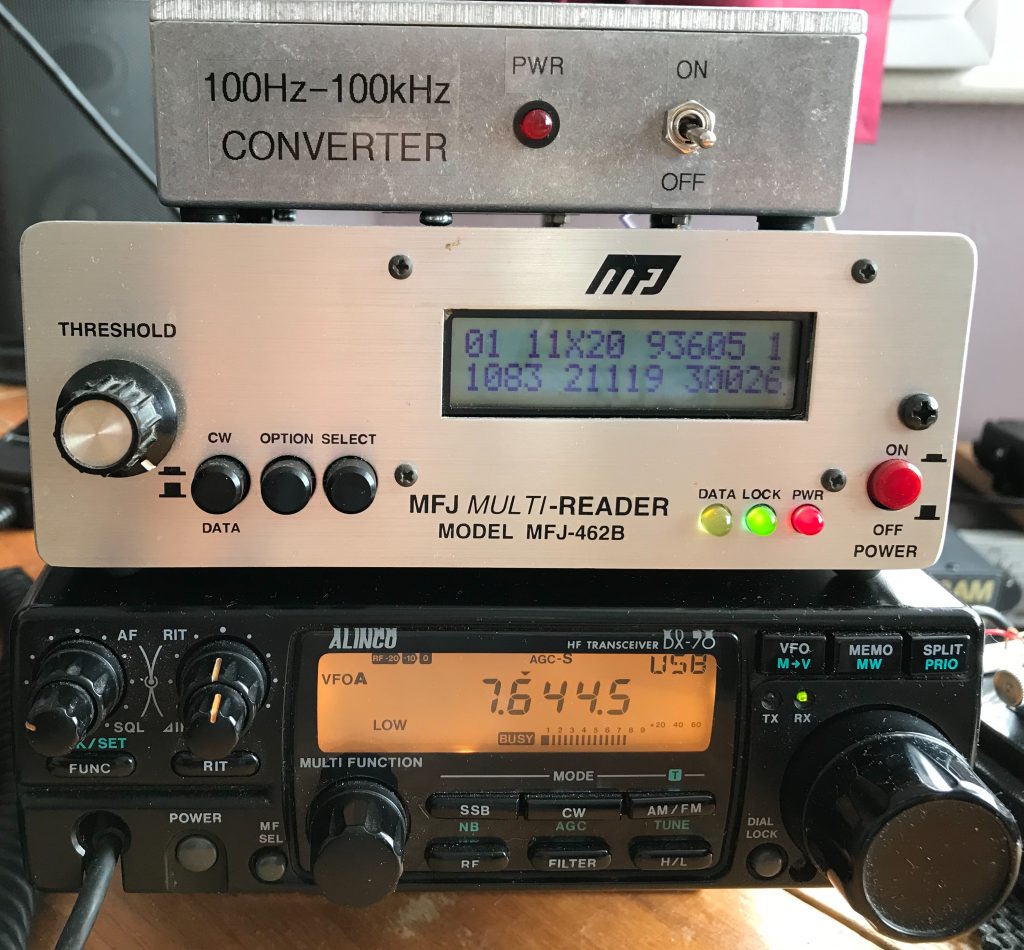The old set up:
This is my original set up for decoding RTTY using the MFJ Multi Reader. The Alinco DX70 is ideal for use with the reader. This setup was pretty good but I’ve now moved on to using my Icom IC7300 and the fldigi computer program for decoding RTTY.
Weather RTTY:
Callsigns, frequencies and RTTY info below…
| Call sign | Frequency | baud – shift |
|---|---|---|
| DDH47 | 147.3 kHz | 50 baud 85 Hz |
| DDK2 | 4583 kHz | 50 baud 450 Hz |
| DDH7 | 7646 kHz | 50 baud 450 Hz |
| DDK9 | 10100.8 kHz | 50 baud 450 Hz |
| DDH9 | 11039 kHz | 50 baud 450 Hz |
| DDH8 | 14467.3 kHz | 50 baud 450 Hz |
CARB – Channel Availability and Receipt Broadcast:
CARB is used by various navies around the world. The RTTY messages display all channels of the station, showing whether a channel is free or not.
Thanks to Martin for the following information…
The numbers in the code refer to the bands available and relied on propagation at that time. The letter after would indicate which channel in the band was available and being monitored, there could sometimes be more than one channel available in a particular band. With just the number and letter it would indicate a clear channel, but a third character could indicate ‘R’ for receipt of a message, or a 3 indicating the requirement for sending your message 3 times in a row. The transmissions from the vessel would be encrypted so, even with a list of the vessel transmit frequencies, you would see the RTTY transmission but it would normally be either a garbled mess or groups of numbers / letters.
PBB CARB RTTY frequencies in kHz.
Signals are good on most of these frequencies here in the U.K.
Baud 75 Shift 850Hz
4280
5667
6358.5
8439
1257.7
12840.7
Ship RTTY frequencies in kHz.
02A – 2121.4
02B – 2259.4
04A – 4155
04B – 4161
04C – 4171.5
06A – 6237.5
06B – 6242
08A – 8321
08B – 8324
08C – 8337.5
12B – 12375.5
17B – 16576
CARB Video:
MORE COMING SOON…

